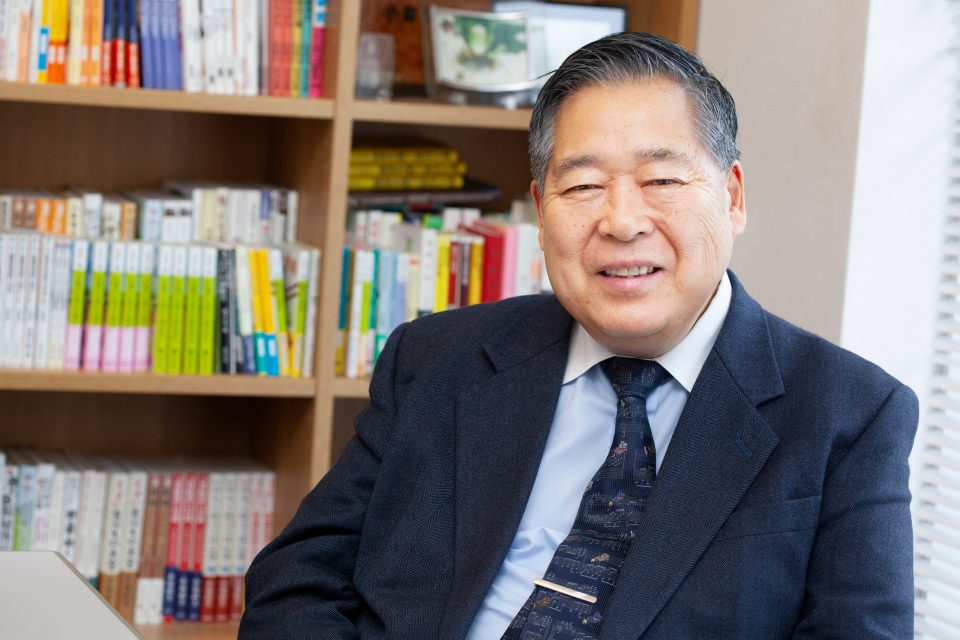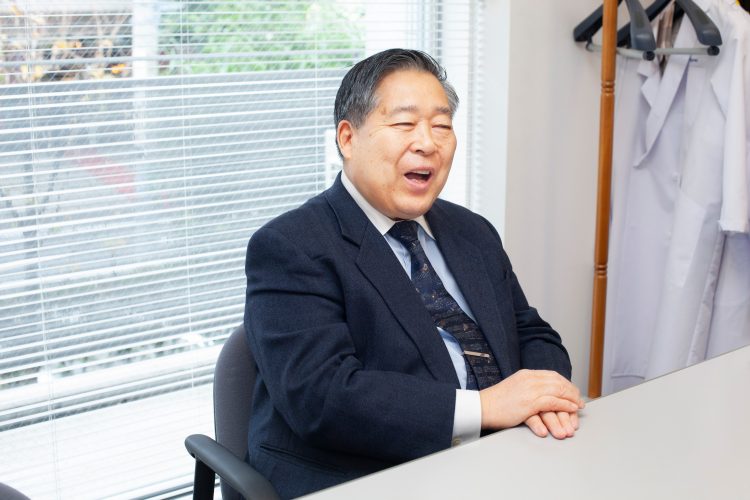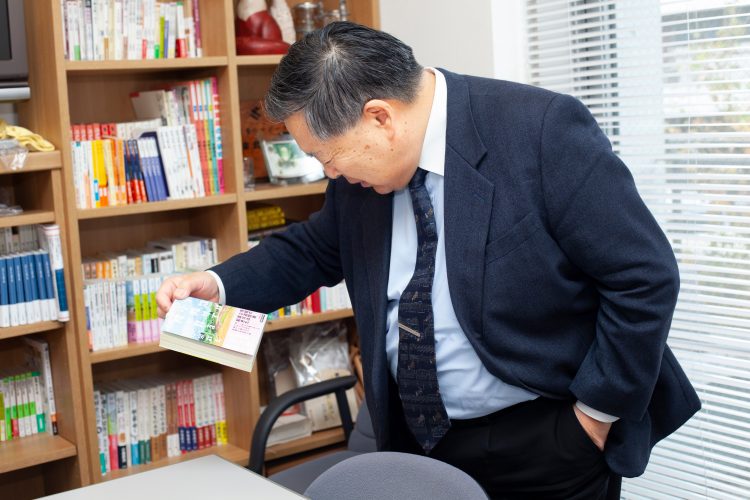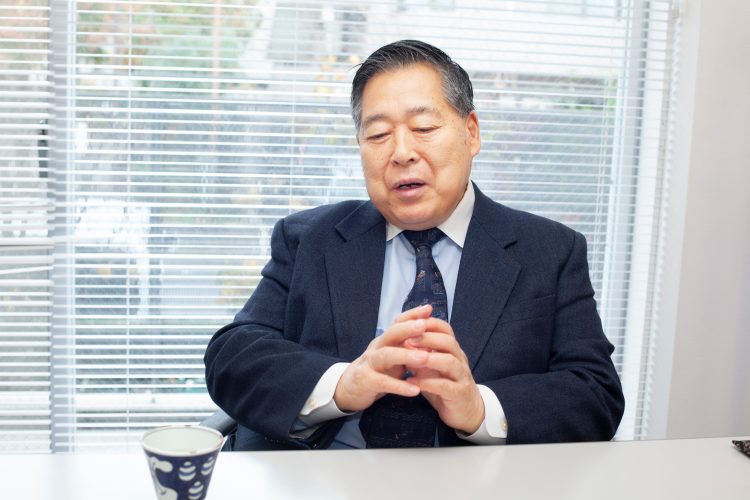Koizumi Takeo: A Passion for Fermentation
Jan 17,2019
Koizumi Takeo: A Passion for Fermentation
Jan 17,2019


Koizumi Takeo is Japan’s foremost authority on fermentation and (as of December 2018) the author of a whopping 143 books on food. Anyone interested in fermentation must have come across his name at least one.
Dr. Koizumi, professor emeritus of Tokyo University of Agriculture, has been visiting professor at Kagoshima University, the University of the Ryukyus, and other institutions all over Japan. He also enthusiastically pursues endeavors relating to fermentation and food. He has been studying the science of fermentation for decades—and bringing the power of fermentation to the people. We asked him how he became interested in fermentation and what he has accomplished to date. He also shared some fascinating and eye-opening tidbits about fermentation.
Koizumi Takeo was born into a sake-making family in the town of Ono, Fukushima Prefecture. As a boy he was a real scamp. He loved nothing more than being adventurous—and eating. Already the seeds were being sown of his future, when he would write numerous accounts of his travels in Japan and beyond exploring the culture of fermented foods.
“I lived in a region called the Abukuma Highlands [a highland area extending from southern Miyagi to northern Ibaraki] 400 meters above sea level, and nature was everywhere. I was constantly playing in the pond and rice paddies and hills behind the brewery, and I came across many different animals and plants. I’d often catch frogs and snakes and skin and skewer them, then fry and eat them. They tasted especially good just before hibernating, when they were nice and plump [laughs]. In the fall you could pick persimmons and wild grapes. As a boy I loved to go on adventures in the great outdoors.”

Having achieved notoriety in the neighborhood as a little rascal, the young Takeo went on to study at Tokyo University of Agriculture, the only institution in Japan that taught the science of brewing at the time. There he studied brewing and fermentation and ventured into the world of microbes. It was a galvanizing experience.
“We had koji malt at home from the time I was born [because my family made sake], so it was inevitable that I would end up in the fermentation field. It was almost fated. I went to university largely at my father’s urging. But fermentation was not generally known as a subject back in those days, and fermentation science struck me as utterly new.
“Fermentation science includes the study of brewing, but both are basically about microbiology. Microbes are invisible to the eye, and studying them just fascinated me. Fermentation doesn’t only concern food. It can be used to produce antibiotics and protect the environment. It covers many different fields. Realizing that microbes exist broadened my horizons tremendously. I was just fascinated, and I studied really hard.”
After graduating from university, Takeo published a paper entitled “A Study of Odors Produced by Yeast” and obtained a doctorate in agriculture from his alma mater. He went on to become a professor at the university and teach there.
“Daiginjo, the highest grade of sake, has a fruity bouquet, right? Well, when you analyze the moromi mash or the sake itself, it displays the same pattern as the smell of a melon or banana. Isn’t it strange that rice should emit the smell of fruit? That prompted me to start investigating the odor of yeasts.
“Some yeasts produce a pleasant odor, while others produce a nasty one. I discovered that when a yeast culture on a petri dish is dyed using a special technique, it emits a pleasant smell if it turns red and an unpleasant smell if it doesn’t. I wrote a paper on these findings and won the university president’s award for it. That’s how I got to be a professor.”

Dr. Koizumi’s fascination with microbes is endless, as obvious from the many books he’s written on the subject. One of them, entitled Super Powered Microbes, which appeared in 2017, is a thrilling account of the amazing abilities that microbes possess and the mysteries behind them.
“The natto bacillus can’t be killed by boiling, and there are other microbes with a similar incredible ability to survive. They do fine at temperatures of 125 degrees Celsius or can survive in concentrated sulfuric acid or intense radiation. And many microbes live inside our body. An adult has four trillion of them!
“If people had eyes like a microscope and could see all the bacteria around them, they wouldn’t be able to stand it [laughs]. Invisible organisms possess incredible powers. That knocked me off my feet. The more I learn about them, the more fascinated I become.”
Today fermented foods are all the rage, and it’s widely known that they’re intimately connected to human health. That’s thanks to Dr. Koizumi.
It all began, he recalls, with a series of lectures entitled “Fermentation Is Strength,” which aired on NHK TV for three months in 2002.
“During the program I talked about the attractions and health benefits of various fermented foods. Today it’s become something of a buzz phrase to describe amazake [a sweet beverage made from fermented rice] as ‘the IV you drink.’ Well, I was the one who first said it, on that show. Amazake is a glucose solution containing virtually all the vitamins you require in a day, including vitamins B1, B2, and B6, pantothenic acid, inositol, and biotin. It occurred to me that it’s just like an intravenous drip. It’s truly amazing what koji is capable of. It can produce vitamins. It can produce amino acid by breaking down the protein on the surface of rice.”

Koji malt is used to make a variety of condiments and seasonings that are indispensable to Japanese cuisine, including miso, soy sauce, mirin, vinegar, and sake. The word koji is usually written with the kanji 麹, but it’s sometimes written with an alternative character, 糀. What’s the difference between the two?
“The character 麹 comes from China, where malt was made from wheat, which is why it contains the element 麦 meaning ‘wheat.’ The character 糀, on the other hand, was coined in Japan and consists of two elements: 米 meaning rice and 花 meaning flower. That’s because when you make koji mold using rice, it looks just like a flower in bloom. The Japanese have such beautiful aesthetic sense.
“There are two types of koji mold, yellow koji mold and black koji mold. Yellow koji is used to make amazake, sake, and many other fermented foods. Black koji is used to make shochu, and because it only exists in Okinawa, its scientific name is taken from the Ryukyu islands: Aspergillus luchuensis. Yellow koji mold and black koji mold have both been designated Japan’s National Molds. Japan must be the only country in the world that grants molds national recognition. But then Japan is the world’s greatest producer of fermented foods.”
“Japan is a veritable powerhouse when it comes to fermented foods. There’s no other country like it. Japan has several thousand varieties of pickles, as I wrote in my book A Complete Guide to Pickles. There are eighty-seven forms of pickled daikon alone. Contrast that with Europe, which has little more than sauerkraut and gherkins.
“I’ve eaten lots of fermented foods in my time, but the one that takes the cake is a traditional dish from Ishikawa Prefecture. This consists of fugu (pufferfish) ovaries pickled in rice bran paste using a special secret recipe. Fugu ovaries contain the deadly poison tetrodotoxin, which is 180 times more toxic than cyanide, and the idea of serving them up as a dish is insane. I call this ‘detoxifying fermentation,’ another example of which is sotetsu miso,* produced in places like the island of Amami Oshima. The Japanese culture of fermentation really is incredible!”
*Sotetsu miso: A type of miso made chiefly in the Amami Islands of Kagoshima Prefecture and Aguni Island, Okinawa Prefecture. The main ingredients are the seeds produced by the female flowers of the sotetsu or sago palm and brown rice. The sago palm contains a toxic, carcinogenic compound called cycasin, which however is rendered harmless by the action of the microbes during fermentation.

Dr. Kozumi eats miso soup every day, and his favorite fermented food, he says, is kusaya—salted and dried fish with a pungent smell. Finally, we asked him about his ambitions for the future.
“Right now I’m focused on revitalizing communities and supporting them with community development. The keyword here, of course, is fermentation. These efforts are being run by the National Fermentation Community Development Network Council , which I chair and which currently consists of fifty to sixty prefectures, cities, and towns all over the country. I’m also director of the Fermentation-culture Promotion Agency, which, as part of its programs, holds a National Fermented Foods Summit in various locations. It took place in Nagano in 2018. My current goal is to pep up local economies by harnessing the power of fermentation.”
Dr. Koizumi has his own distinctive take on the wonders and magic of microbes, and this he shares in layman’s language leavened with humor. No wonder he’s earned such whacky nicknames as the Fermented Mask and Unidentified Flavored Object.
Doubtless he will continue to offer us new glimpses into the world of fermentation, which remains shrouded in mystery, and the myriad microbes at work there.

Doctor of Agriculture
Doctor of Agriculture
Koizumi Takeo, an expert in the science of brewing and fermentation and an authority on food culture, was born in Fukushima Prefecture in 1943. He is professor emeritus of Tokyo University of Agriculture and has been visiting professor at other institutions up and down Japan. He frequently serves as food advisor to government agencies at the national and local levels. The author of more than 140 books on food, he also appears frequently on television and engages in a multitude of other endeavors.